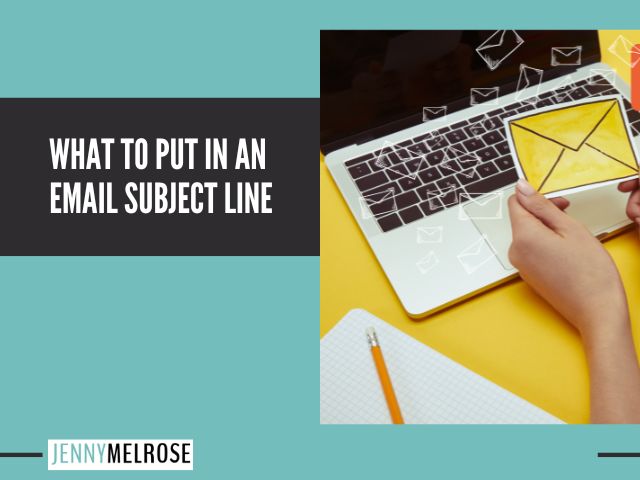Discover how to maximize open rates and engagement by understanding what to put in an email subject line that grabs attention and drives action.
IE 400: What to Put in an Email Subject Line

How can I make my subject line attention-grabbing?
The way in which you’re going to do this is, I want you to focus on the problem that you are going to solve within that sentence email and the email that you are sending.
We’ve talked about this in the past it should be short and sweet.
It does not need to be multiple paragraphs.
When I write an email, it normally will have three to five sentences and then have a call to action to find out more.
That is the purpose of your email list.
It’s to get people to continue to to gain new information on the topics that you provide them with by solving it for them.
When you are thinking about that attention grabbing subject line, you want to ask yourself, what is the pain point that you are going to solve in the email?
When you know that, You can then create your subject line so that it pulls at that.
How can I make my subject line relevant to the content of the email?
We talked about the fact that you are going to ask a question that you are then going to answer by hitting on the pain point within that subject line.
You want to really start to dive into thinking about what are the questions that I can ask.
Therefor if I’m a food blogger and I’ve created a chicken parm recipe, I may want to put a subject line that says, looking for traditional chicken parm or looking for a quick chicken parm, or depending again, upon who your audience is.
Are they looking for my secret ingredient for chicken parm?
You want it to be a question that’s going to pull at them and they’re going to want to open it in order to see what the content is and how it can continue to solve their problem.
Are there any best practices for writing subject lines that increase open rates?
This really goes to the idea that if you write a question as your subject line and they can see themselves in that question as having that pain point, they’re going to be more likely to open it.
You want your open rate to be anywhere from 1 percent to 8 percent and 8 percent is on the high side.
Some of you may have lower open rates, and I will tell you, you want to make sure that you’re doing resends for those emails.
So within your email software, you should be able to send a second email to the people that have not opened the first email.
This is a simple thing where you’re going to then change up your subject line in order to try to get those people that didn’t open the first time.
This is where you can start to play with the pain points that you’re hitting on, the questions that you are asking, so that you can change it up a little bit in order to get those people that didn’t open the first time.
How do I avoid sounding too promotional or salesy in my subject line?
This is where I would not recommend for you to use the words free or buy one, get one, anything like where it sounds like it’s going to be a sales email.
You want to make sure that when you are doing a sales email it still goes back to the pain point that you are solving.
If I am going to write a sales email that is going to promote my insider’s program, I might put into the subject line, struggling with chasing your tail, or shiny object syndrome got you.
You want to put in things that people will identify themselves within the subject line so that they are going to want to open it and find the problem.
How can I test different subject lines to see which one performs best?
This is going to be based upon the email software that you use.
If you’re using ConvertKit, MailChimp and any other email software will give you the opportunity to be able to do A, B testing when it comes to your subject lines.
You’re also going to want to look for that within your software, that’s where you’re going to do it.
All the A B testing does is it’s going to allow you to put in two subject lines and it’s going to send out those subject lines to a portion, a percentage of your email list and see which one wins or starts to get opened the most.
Then once it’s been sent out to that certain percentage of your list, it doesn’t matter.
Just look to see which one was the winner and then it’ll change so that that is the first subject line that gets sent out to the rest of your list.
It’s going to depend upon each software and what percentage of your list gets it.
Just for math purposes, let’s say that they’re going to send it to 20 percent of your list with the two different, so 10 percent is going to get one subject line, 10 percent gets the other.
They then look to see which one was opened more.
Then they will send that winning subject line to the rest of your list, which would be the 80 percent that is left over.
With A, B testing you can also then do a re send after the email has been sent out to be able to get the people that didn’t open to open now moving forward.
This is going to be something that you can take a look at within your software that you are using.
Every software that is out there will have tutorials on how to use all of the pieces. It will also depend upon the software as far as potentially the tier or what you are paying for.
However, if you have certain abilities to do A, B testing where it’s going to allow you to see which email performs better. If your software and your tier does not allow you to do A, B testing, I would start looking at your emails over the weeks that you, over the month that you sent and look to see what the open rates are looking like.
If your open rates are pretty consistent and there are about the same topics or hitting about on the same pain points, then you could very well be on point, but if you’re seeing that there’s a certain dip in some of your emails or there’s even an increase in your open rate, then I would be taking a look and analyzing what am I doing differently in those subject lines.
How can I continue to model that in other subject lines when I’m writing my emails in the future?
You always want to make sure that you are taking a look at your data so that you are data driven in what you are doing within your business.


